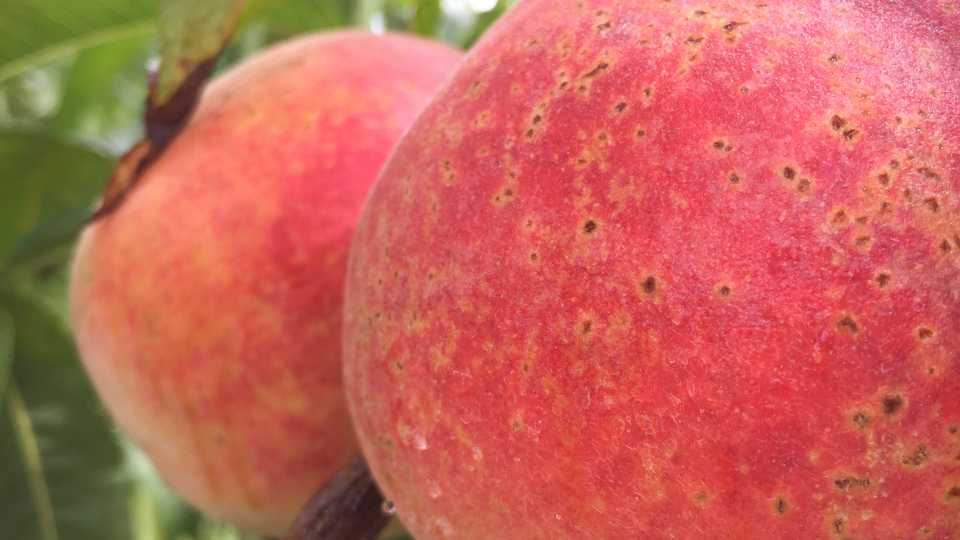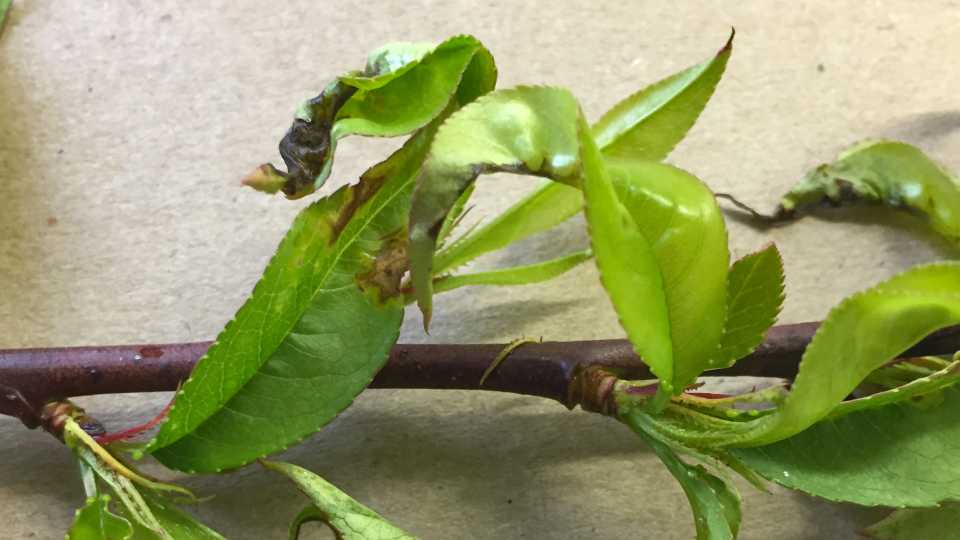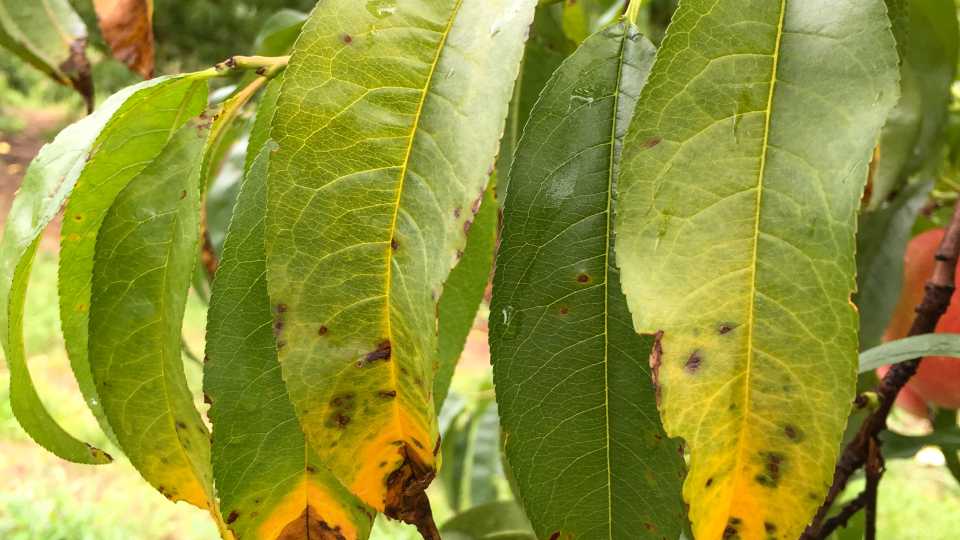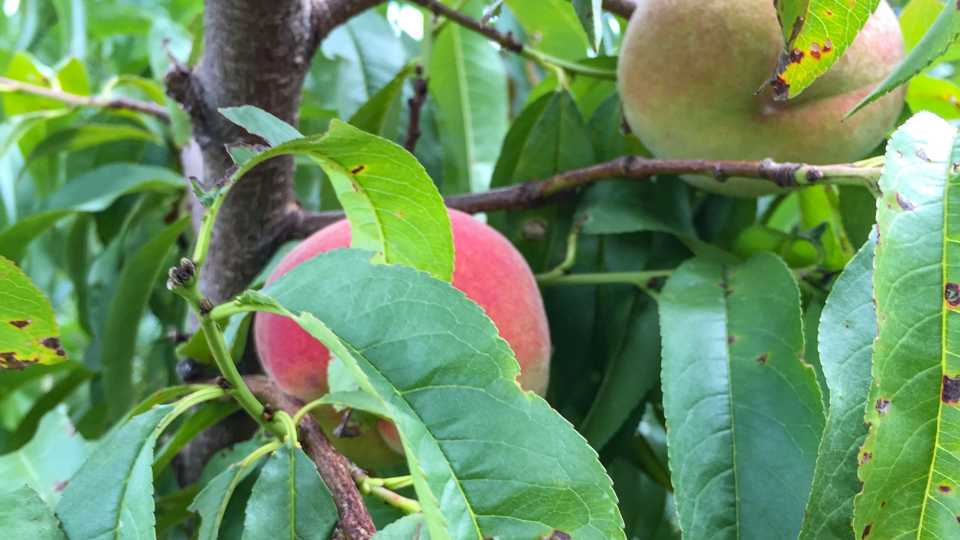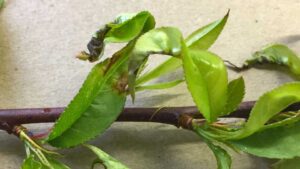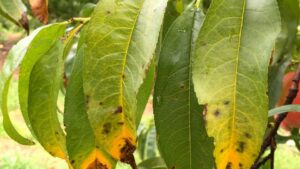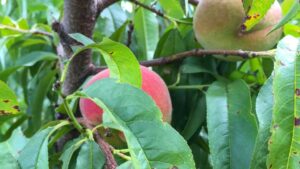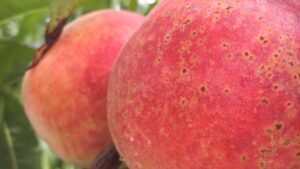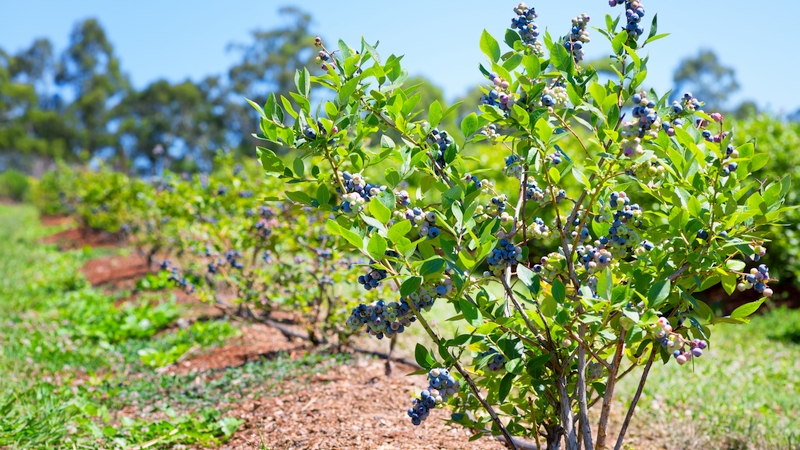Get the Jump on Early Season Bacterial Spot Management in Peaches
Bacterial spot is a tough disease problem on peach, nectarine, plum, and apricot in humid and sandy growing conditions in the U.S. The goal for managing this disease is to prevent bacterial spot from disfiguring and pitting fruit. However, the battle is really won or lost in the early season before fruit are present. Infections on leaves early in the season can set the stage for fruit infections after shuck drop. The focus in this column is on management of bacterial spot in the early season.
Peach varieties differ greatly in their leaf and fruit resistance to bacterial spot. Leaf symptoms can range from necrotic spots, to spots with chlorotic halos, to expansive yellowing tips and leaf drop. For some varieties, only a few necrotic spots are sufficient to cause the leaf to drop, whereas other varieties can have many spots per leaf and no yellowing or leaf drop. I know of no study to show this, but it may turn out that varieties with abundant necrotic spots, but little leaf yellowing and drop may represent a more serious source of infection for fruit than varieties that drop leaves readily.
TWO COPIES ARE BETTER
Development of varieties resistant to bacterial spot continues to be a high priority for peach improvement programs at Clemson University, Rutgers, Michigan State University, and elsewhere. A major breakthrough was achieved by cooperating scientists who found a genetic marker, Xap.Pp.OC-6.1 (abbreviated here as XAP6), for fruit resistance against this disease. Breeding programs at Michigan State University, Clemson, and elsewhere use the marker to cull out selections lacking these useful genes. Most resistant are the varieties with two copies of the gene segment, one from each parent.
Varieties with only one copy are less resistant. We tested 75 varieties in the Michigan State University peach and nectarine variety trial and found that 16 selections had two copies of the XAP6 segment, but the vast majority (57) had only one copy, and two had no copies.
So far, no peach or nectarine variety is immune from bacterial spot, even those containing two copies of the XAP6 gene segment. Under conditions favoring the disease, even relatively resistant fruit can develop speckling that reduces fruit quality and increases susceptibility to fungal diseases such as brown rot. So far, no genetic markers have developed that are particularly useful for plant breeders to identify new seedlings with good resistance to leaf infections, but likely good markers can be found with more research. Reliance on chemical control is still the main method for suppressing leaf infections in the early season before bloom.
EARLY SEASON BACTERIAL SPOT
There is some controversy about what conditions favor bacterial spot epidemics in the orchard. In a petri dish the bacterial pathogen, Xanthomonas arboricola pruni (XAP) shows maximum growth in the range of 68°F to 85°F, with fastest growth at the higher temperature.
This is at odds with field observations in Michigan and elsewhere, where significant bacterial spot symptoms can be seen at temperatures below 70°F following several days of rain. Inoculation trials have shown that XAP is a somewhat fussy pathogen that requires very humid environmental conditions for multiplication and symptom development. This is similar to recent studies by G. Sundin and S. Slack of Michigan State University who recently discovered that the fire blight bacteria (Erwinia amylovora) grow in apple flowers most rapidly at night under temperatures considerably cooler than expected from laboratory studies. For both Xanthomonas and Erwinia, there are interactions among the pathogen, host, and the environment that we do not fully understand. Having a better idea about what conditions favor bacterial spot development may help to know what spray applications are needed and which ones can be skipped.
Work by Dave Ritchie at North Carolina State University more than a decade ago emphasized the importance of early season sprays to prevent bacterial spot buildup on foliage. The chemical options for peaches are copper and oxytetracycline. The increase in spraying for bacterial spot over the years has been significant, with some orchards receiving more than 12 applications per season. This is leading to concerns about the buildup of XAP resistance to these two chemicals, as researchers in South Carolina (H. Wang) and elsewhere are finding.
In addition, oxytetracycline is a very short-lived chemical in the orchard.
Until better predictive models come along, the most strategic use of these chemicals is shortly before a predicted wetting event, allowing time for the spray to dry thoroughly.





